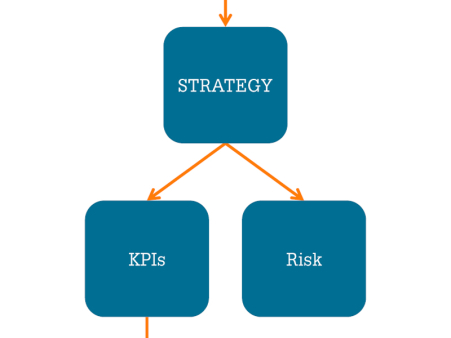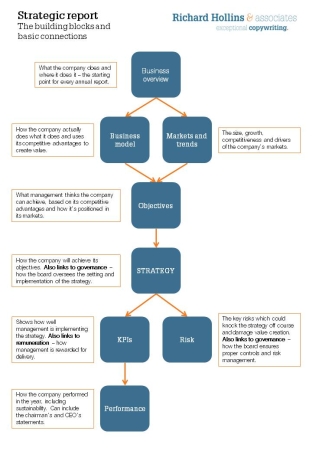
The strategic report is the critical part of your annual report. It’s where you set out what your business does, what you’re looking to achieve and how well you’re progressing. This makes the strategic report fundamental to your investors’ understanding of why they should own shares in your company. In this post, we’ve picked out the key things you need to think about, so you can produce a strategic report that works for you.
The regulations
Before we get into the detail, it’s worth quickly considering the regulations that govern the strategic report.
The narrative reporting regulations (PDF) came into force in August 2013, amending the Companies Act to require companies to produce a strategic report. (See our earlier post for more details of what’s required).
The regulations state that:
“The purpose of the strategic report is to inform members of the company and help them assess how the directors have performed their duty under section 172 (duty to promote the success of the company).”
The strategic report is therefore aimed at investors. Companies have often tried to produce reports that meet the needs of numerous groups, without really satisfying anyone. While you shouldn’t lose sight of the fact that your employees, customers, suppliers and lenders will read the report, the needs of shareholders are paramount.
The FRC’s guidance
The Financial Reporting Council has also published guidance on the strategic report, which goes well beyond the regulations. This is essential reading and contains some basic principles that underpin any effective annual report. If you apply them properly, you can’t fail to make your report better.
1. Tell a story
It’s encouraging that the FRC is looking to put the narrative into narrative reporting. One of the main objectives of the guidance is to:
“set out high level principles that enable entities to ‘tell their story’”
The first point to consider is what your story is. In our view, your story is your investment case – why investors should buy your shares and hold on to them. If you haven’t already, you should sit down and write this as a separate exercise. It’s incredibly useful for all your investor communications.
In the strategic report, each spread then becomes a building block in your story. This means you need to present your information in the right order. For every spread in the report, you should be asking yourself, ‘Where does this fit in my story? And if I were an investor, what would I need to know to make sense of this?’
For example, to understand your strategy, investors will need to know how you currently do business (your business model) and the medium to long-term drivers of your markets. A properly constructed strategy will respond to and build on both of these. Both the business model and the market overview should therefore come before the strategy.
The guidance recognises this need to structure the strategic report effectively, so your story is clear. It says that:
“Placement is a key theme in the guidance, with a view to providing entities with the building
blocks to be innovative in the location of information while working within the regulatory
framework.”
Companies can therefore choose the structure that works most effectively for them. The guidance quite deliberately avoids being prescriptive about structure or even giving an example structure that companies could follow.
2. Join up the dots
Annual reports have long been criticised for presenting a wealth of unconnected information and expecting investors to make sense of it. Bringing out the connections between the report’s different sections is an essential part of effective storytelling.
At a high level, the FRC says that its guidance is intended to:
“… encourage preparers to consider how the strategic report fits within the annual report as a whole, with a view to improving the overall quality of financial reporting.”
This means connecting the strategic report to the governance statements, as well as to the financial statements. For example, how does the board control the process of setting the strategy? How does performance link to management’s pay? These are key points that are missing from many reports.
At a more detailed level, the strategic report needs to effectively connect its individual sections. Not surprisingly, the link is often your strategy. For example, you should show:
- how the strategy will help you achieve your corporate objectives
- how the strategy builds on your business model
- how the strategy reflects what’s happening in your markets
- how your key performance indicators show your strategic progress
- how performance in the year shows your strategy in action
- how risk might stop you implementing your strategy
Many companies have been getting better at drawing out these connections but there is still a long way to go.
To help you make sense of the linkages within the strategic report and to the governance sections, we’ve put together a diagram which you can download as a PDF by clicking the image below:
3. Only include what’s important
To be most useful to investors, the strategic report should only contain material information. The regulations leave this to the company to interpret. For example, they require companies to discuss issues “to the extent necessary to understand” them.
The FRC has said for some time that annual reports are too cluttered, so it’s not surprising that the guidance encourages companies to focus what they say. The guidance therefore offers this definition:
“Information is material if its omission or misrepresentation could influence the economic decisions shareholders take on the basis of the annual report as a whole. Only information that is material in the context of the strategic report should be included within it..”
This is high standard for information to meet. How much of a typical corporate responsibility section would survive it, for example? We should be seeing more references to supplementary content, either in appendices to reports or – if it’s not a legally required disclosure – online.
4. Look forwards
Only looking backwards is a particular weakness in many smaller company reports. They focus on explaining last year’s results and forget that the value of their shares depends on what’s going to happen in the future.
This doesn’t mean the strategic report should give financial forecasts. What it does mean is drawing out the events, trends, opportunities and risks that could affect your performance and which investors will need to understand to come to an informed view of how well you’re likely to do.
5. Be fair, balanced and understandable
This is already a requirement for companies covered by the UK Corporate Governance code but it bears repeating because of the natural human tendency to gloss over bad news and focus on the good. We’ve already set out our view on this, in our post on credible copywriting.
How long should the strategic report be?
The answers is that, like any good piece of communication, the strategic report should be as long as it needs to be and no longer.
The regulations put the onus on the company to disclose the right amount. They contain phrases such as:
- “balanced and comprehensive” (in describing performance and year end position)
- “consistent with the size and complexity of the business” (i.e. the strategic report for large or complex businesses can be longer than for simple businesses)
- “to the extent necessary for an understanding” (in relation to KPIs and trends)
The guidance doesn’t consider the length of the strategic report, other than to say it should be concise (a natural consequence of only including material information).
Find out more
Read about our annual report copywriting service and our corporate reporting consultancy, or contact us to discuss how we can help you with your next annual report.






